Slipping into my drysuit every day feels like getting ready for war. It is often quite hot (35 degrees during the summer in Mexico) and you can’t hurry up, or else you will start sweating and you’ll be cold during the dive.
I would say I am still new to drysuit diving. Compared to cold-water divers or those who initially learned to dive in a drysuit, I am new.
Drysuits are heavy-duty outfits with a price tag comparable to a wedding dress and the complexity of a bikini. We wear them daily in the harshest conditions, we pay hefty sums for the finest material, shape, and comfort. And most importantly, to stay dry. It has to fit just right, in all the right places. We also want to look good in it, don’t we?
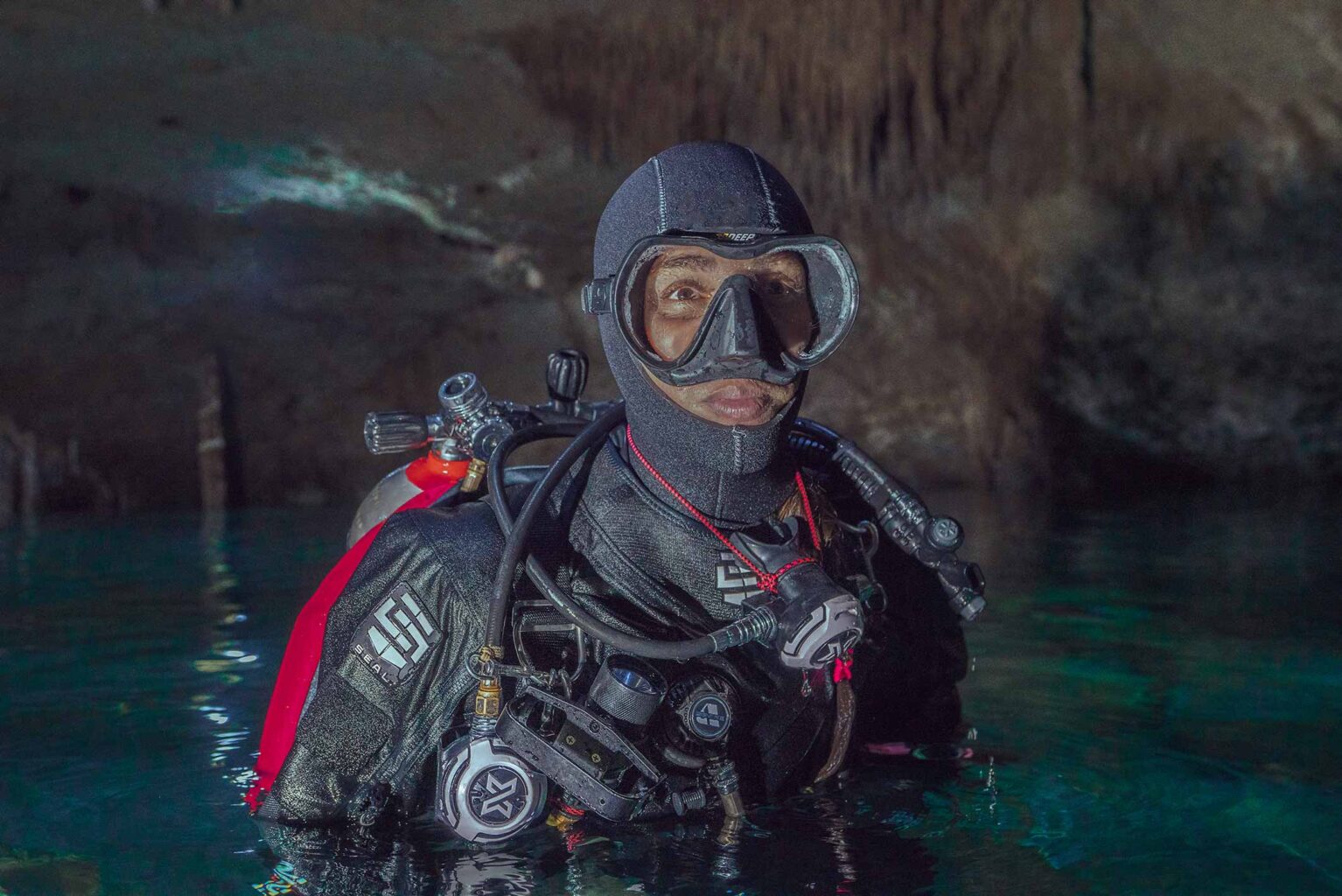
Looking good in it, though, has become more of an added value for my job where I often work with photographers creating stunning cave and cave diving lifestyle images.
Admittedly, I never took a drysuit course (because I couldn’t find one in my area). I jumped into the water at Cenote Carwash, went for a dive in open water, and got the hang of it right away. I cannot say diving dry was a challenge, other than learning the tips and tricks to dive more comfortably in different environments and managing one more task (dumping or adding gas). I attribute the ease I found in drysuit diving to the right fit of my suits (no space for big gas bubbles shifting) and the balanced rig philosophy we teach at ProTec Dive Centers (avoiding being overweighted). Thousands of dives and a few technical instructor certifications later, here is what I think of drysuit diving and Seal suits.
First of All, Why Dive Dry?
I have been called snobbish, overly complicated, and exaggerate because I dive in a drysuit in warm water. That’s fine! The reasons I dive dry are many, and I also share and promote them among students and other diving pros:
- Staying dry, plain and simple. When I am dry during and after a dive, I am more comfortable.
- Avoiding the smell of pee. I know many people can control it and wait until the end of the dive; I can’t, and I don’t think it’s healthy. Some of my work dives last 3 to 5 hours, and it is healthier to stay well-hydrated and be able to pee than to hold it for long periods.
- Preserving energy. If you’re dry, you lose less heat during the dive, which in turn conserves energy. This increases concentration, enhances complex task performance, problem-solving, and awareness. Even if you do not feel cold, your body uses energy to maintain your temperature.
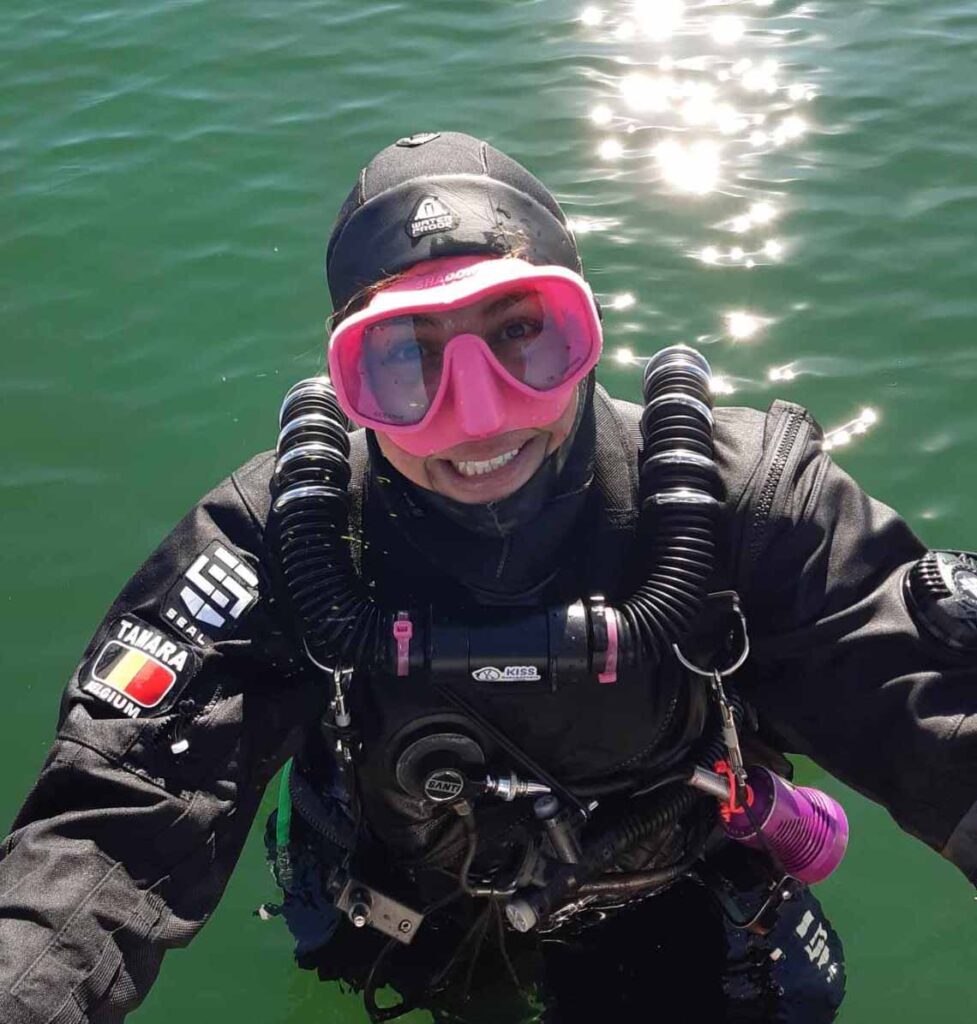
- Preserving gas. If you’re warm, your breathing is controlled, making you less likely to increase your breathing rate or breathe deeper than normal. Why is this relevant if I already have excellent gas consumption or am on a rebreather, so I potentially don’t need to conserve gas? Well, I think more gas in a cave is always better. There is simply no reason not to want the maximum gas reserve, whether OC or CCR.
- A drysuit lasts longer than a wetsuit. As a dive professional and cave diver, my wetsuits typically lasted about 8 months before they were ready to be cut up and discarded. They compressed badly, provided less warmth over time, and eventually led to me being cold on every dive, requiring multiple additional layers, spending more money, and being less comfortable. It just didn’t work for me and the work I wanted to do teaching cave diving in Mexico.
- Better trim and buoyancy control. In my opinion, a drysuit allows more flexibility in placing trim weights where and how many you need, with the undergarments compensating for the weight excess.
- Buoyancy redundancy. Even if manufacturers do not promote this idea, the reality is that a drysuit does provide redundancy, and I would use it as such if I had a critical failure of my main buoyancy device, which, as we know, is rare these days.
- Added exposure protection. Drysuits provide additional protection for the skin and body in general, and they also buffer the tight harness and hard webbing, which was always uncomfortable for me in a wetsuit.
- Drysuits don’t compress underwater like wetsuits. This means the fit of my harness is better than with a wetsuit, where the harness eventually becomes loose, especially at depth, have you noticed?
- More advanced diving. Drysuit diving is more complex than wetsuit diving, so I appreciate the difficulty of the configuration and the knowledge and skill required to master the buoyancy of the suit on top of everything else.
- Cold water diving. In cold water, there is no real option for high-level technical dives in a wetsuit; it becomes a health risk to attempt proper cold-water dives with decompression at low temperatures. Knowing I wanted to progress to more challenging types of diving, I saw the need to master a drysuit beforehand. I recently travelled to the North Sea for wreck diving and to Hancza Lake in Poland to train in 4°C water doing dives between 60m and 90m. I would not have been able to do this without the experience I have in dry suit diving and a proper suit and undergarments.
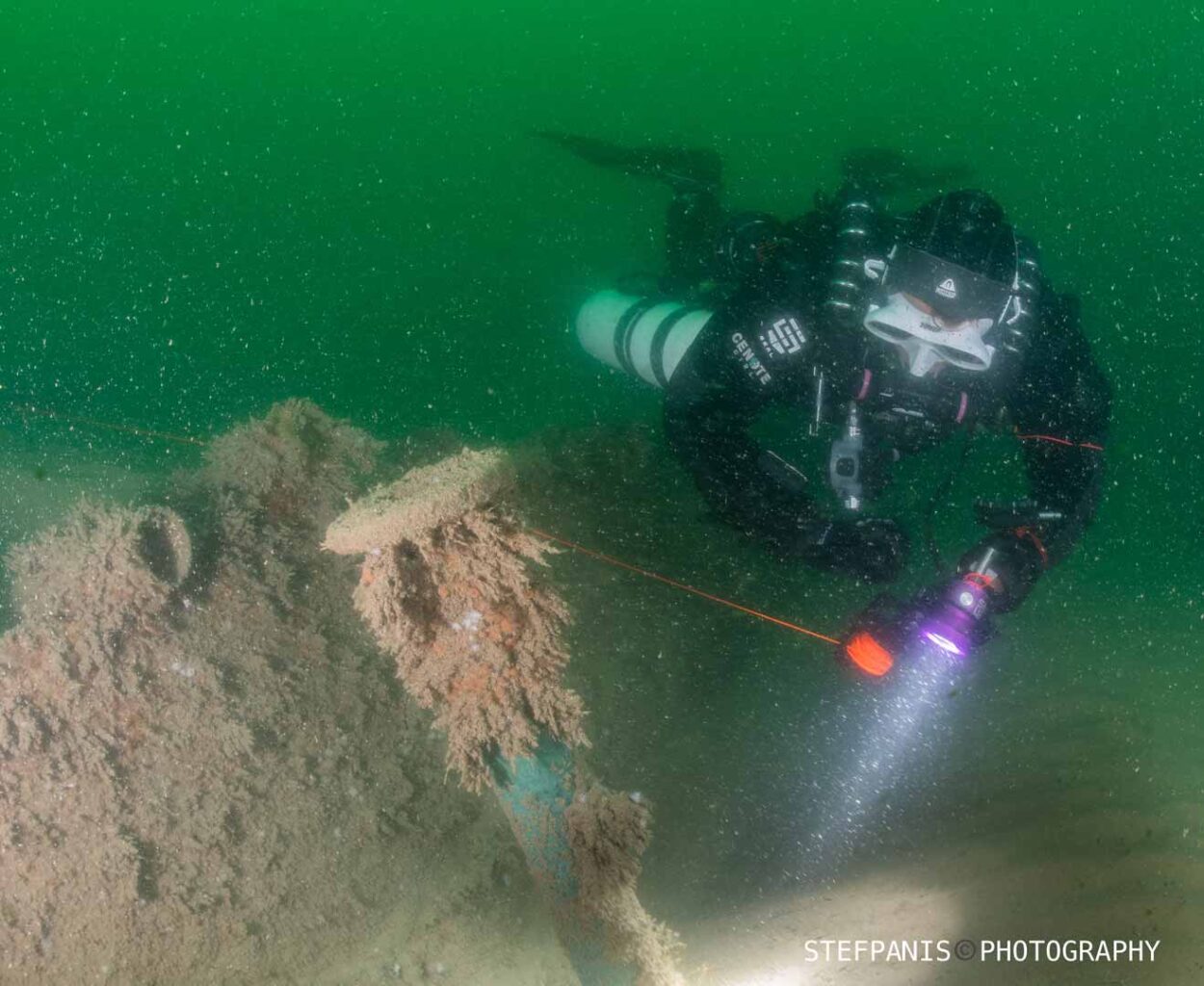
Photo: Stefan Panis
Now, Let’s Talk About the Disadvantages of Drysuit Diving:
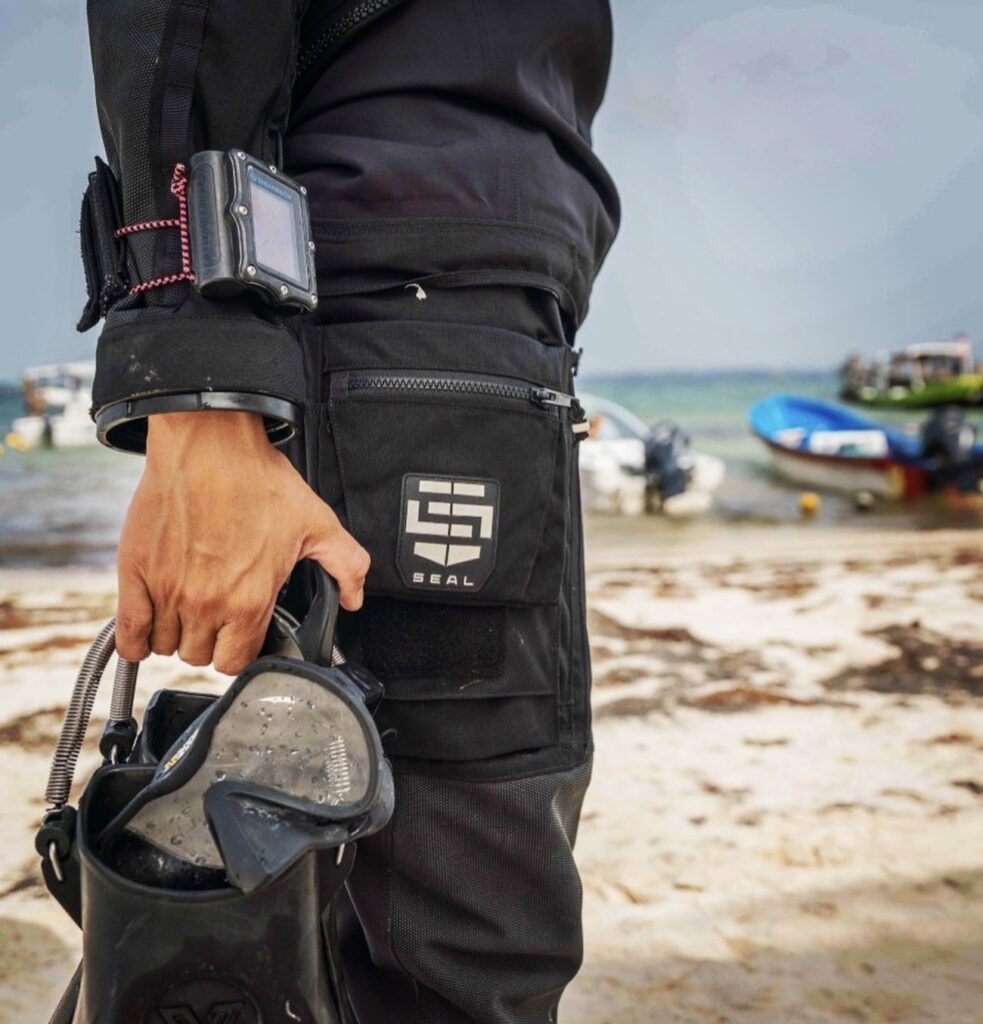
- Price: Drysuits are generally more expensive than wetsuits
- Fit: Getting the right fit sometimes takes a few tries.
- Repairs: Repairing a drysuit can be expensive (in some areas more than others)
- Points of failure: Drysuits do have points of failure, and they do fail sometimes
- Maintenance: Drysuits require maintenance and constant care and investment to keep them up
- Potential failures: Failures can prevent you from diving, depending on how serious they are
- Buoyancy control: Drysuits pose different buoyancy control challenges (solved with training or experience)
- Remote locations: In remote locations, it can be difficult to find a repair or replacement
- Undergarments: Drysuits require buying undergarments too (another investment)
Photo: Alfred Minnaar
My Experience Ordering the SL:01 Seal Drysuit
The Seal Drysuits website has a configurator tool that allows you to input all the required measurements, pick all the options, and download your order. Just like we do when ordering an Stealth 2.0 Tec harness through the XDeep Tuneup, since both companies belong to the same group, their website has similar advanced features.
The Seal configurator is not where you directly place the order but where you learn about the features of the suit and pick them one by one to create your ideal Seal suit.
First, you need to be prepared to fill in the measurements. This means you need to have a measuring tape and the thickest undergarments that you plan to wear with this suit. It’s very important to allocate some time to take the measurements and have someone help you; do not try to take the measurements yourself and in a rush!
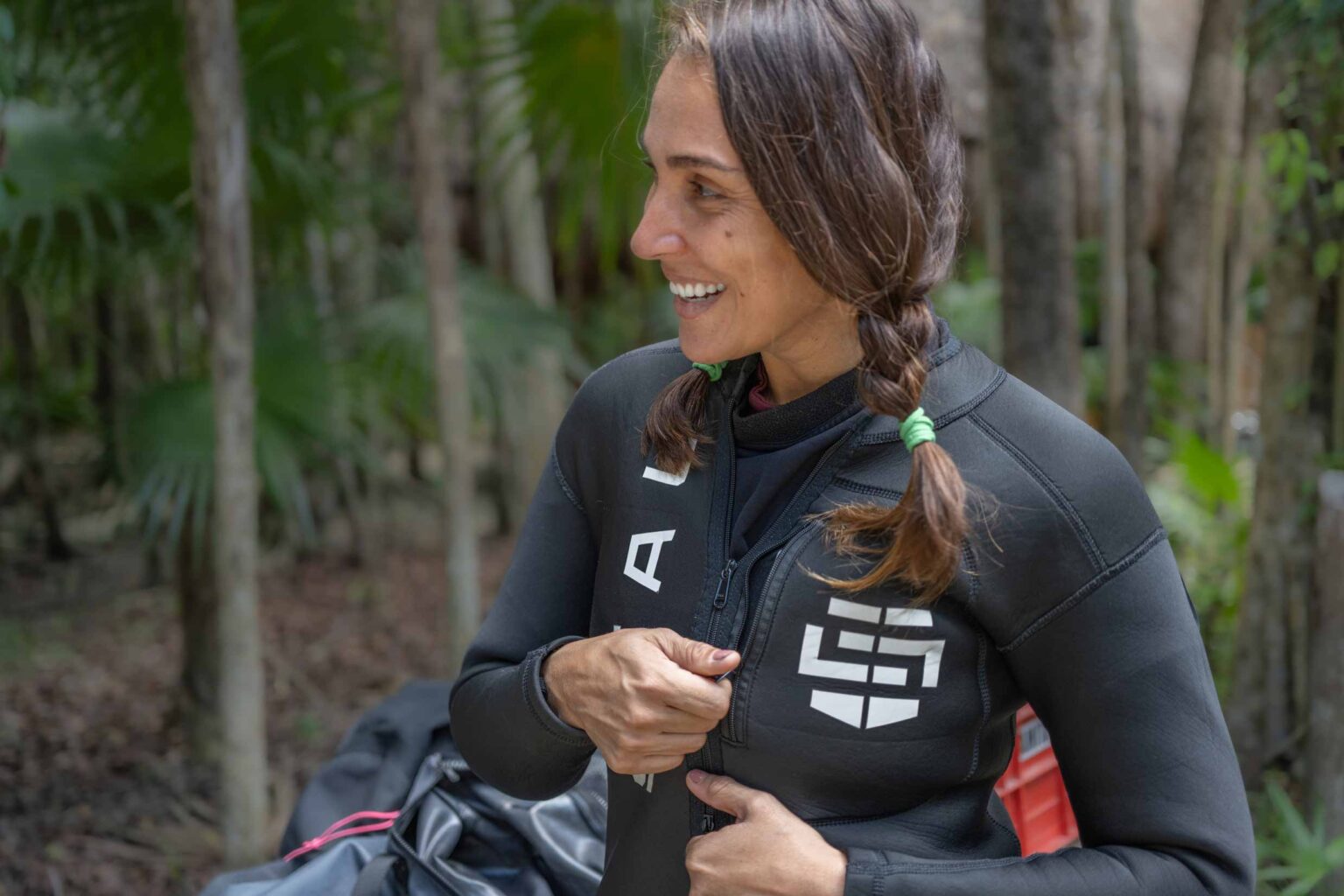
Photo: Mekan
After entering your email address and location, you’ll start choosing the options for your suit. Note that even though they ask for gender, the Seal suit does not have a female cut. It is a made-to-measure suit; we could say it’s “unisex.” Unlike other brands that have features enhancing the female shape, this one is more neutral in that sense.
The Features
Zipper
The first feature you’ll choose is the zipper. This is a VERY important part of your suit. Among the different brands I’ve worn, I have generally had a terrible experience with plastic zippers. This may be related to the environment where I dive, the type of water, or the heat, which in my case may have led to the plastic of the zipper lock becoming brittle very quickly. Therefore, I now exclusively order suits with metal zippers.
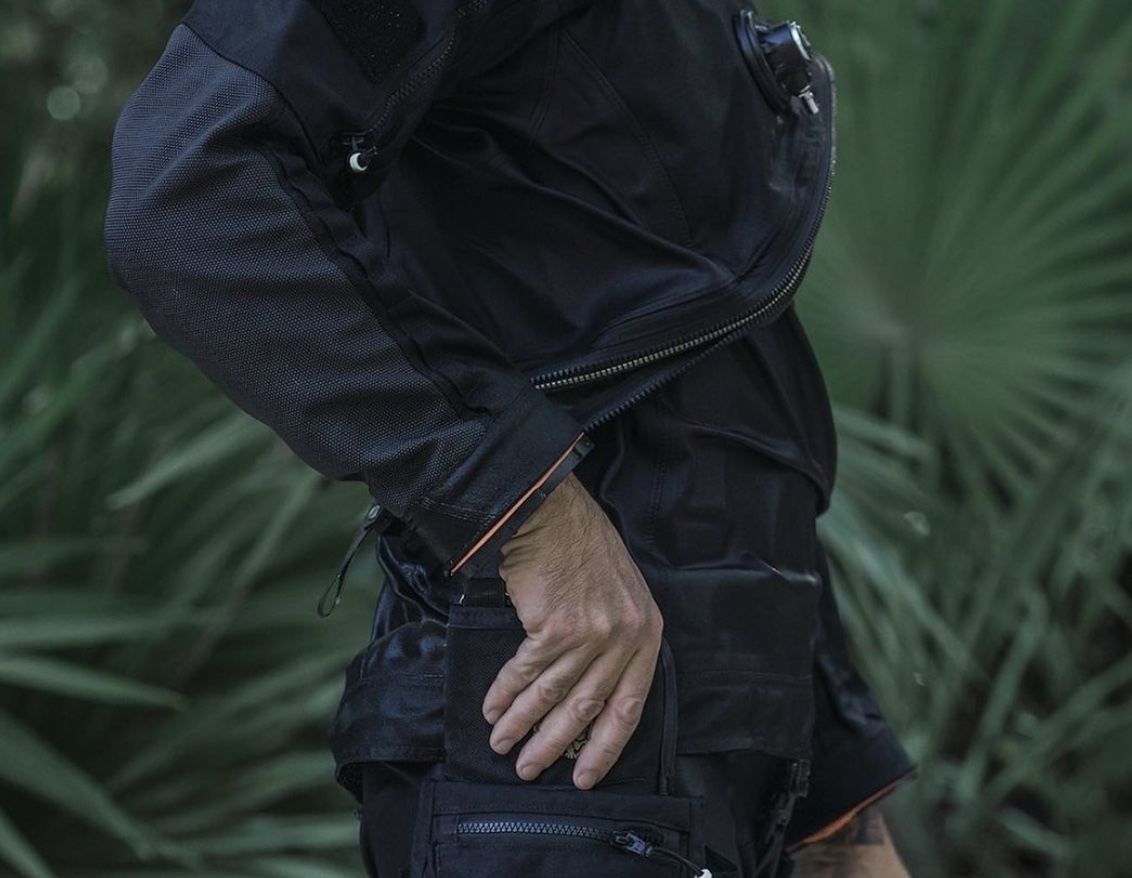
Metal zippers need to be waxed or lubricated; I do this every couple of dives. You also need to keep the zipper clear of debris, dust, etc. A toothbrush is a good tool to clean and maintain it. A metal zipper may also start showing fabric threads that come off of it; these can be carefully burnt with a lighter to prevent them from getting between the teeth and causing a small leak.
The Seals and rings
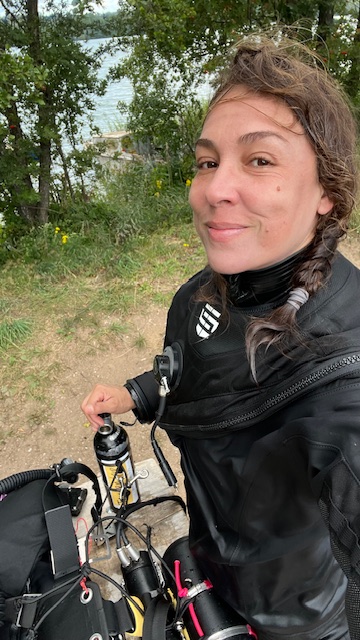
Next, you will choose a neck seal. I have used neoprene neck seals before, and I do prefer them in terms of warmth and comfort, as they are softer and easier to wear than other types of seals. However, in my case, the material deteriorated faster than I would have liked, and I had to replace them several times a year, which I do not want to do again after having tried silicone neck seals. I have used my silicone seals without needing to replace them for almost two years. They may pull some hair when putting them on, but I have bad hair most days anyway, so I’m okay with that. Regarding latex seals, they are not my favorite option because I find they also deteriorate faster than silicone and cause neck chafing (you can get around this buying a bio seal). But I have used them enough to say that they need more maintenance than silicone, so if you’re a caring person and are willing to clean them, wash them, put talc on them, and make sure they dry between dives, latex may be a good option for you. Latex is known for reacting differently to some skin types (some natural skin oils or skin products deteriorate them faster).
Using a silicone neck seal, I have chosen the Quick Neck option as well. This means that replacing a seal on the spot can be done in minutes if you have a spare with you. In remote locations or professional diving, this is clearly an advantage.
As we’re already talking about seals, let’s jump to wrist seals. I have never worn a type other than silicone and have always used the self-replacement rings in different versions. I currently love the Ultima Twist system, which allows me to use dry gloves too. Installing the gloves on the rings is a little hard, may result in finger injury and for sure requires two people, but once installed, clicking the dry glove rings onto the drysuit is no harder than putting the lid on a Tupperware. I love that, and I currently use this system both for warm and cold water without having to change anything on the suit cuff. In warm water I use simple neoprene gloves, the rings do not bother me and are rather unnoticeable.
Valves
Valves are the next option to choose in the Seal drysuit configurator. My valves on every suit have always been Apeks, and I don’t have a reason to change. Both the Apeks inlet valve and the low-profile outlet valve work fine and are also easy to service and clean.
Socks or boots?
Next, we move on to foot protection. I have always been particular about my feet; I dislike hard shoes, and I am a bit sensitive, so I have loved having trilam socks. This is because I can then pick a boot that fits me well and change the size of the boot when I switch from warm to cold water. I wear one size bigger than my actual size when diving in warm water and two sizes bigger when diving in cold water, in which case I have 2 to 3 layers of socks. The advantage of using socks instead of having integrated boots is that I can replace the booties without having to send the suit in for repair if it breaks. The type of boots I use with my drysuit are not rock boots like many people use; just like the rest of my team, I prefer neoprene booties.
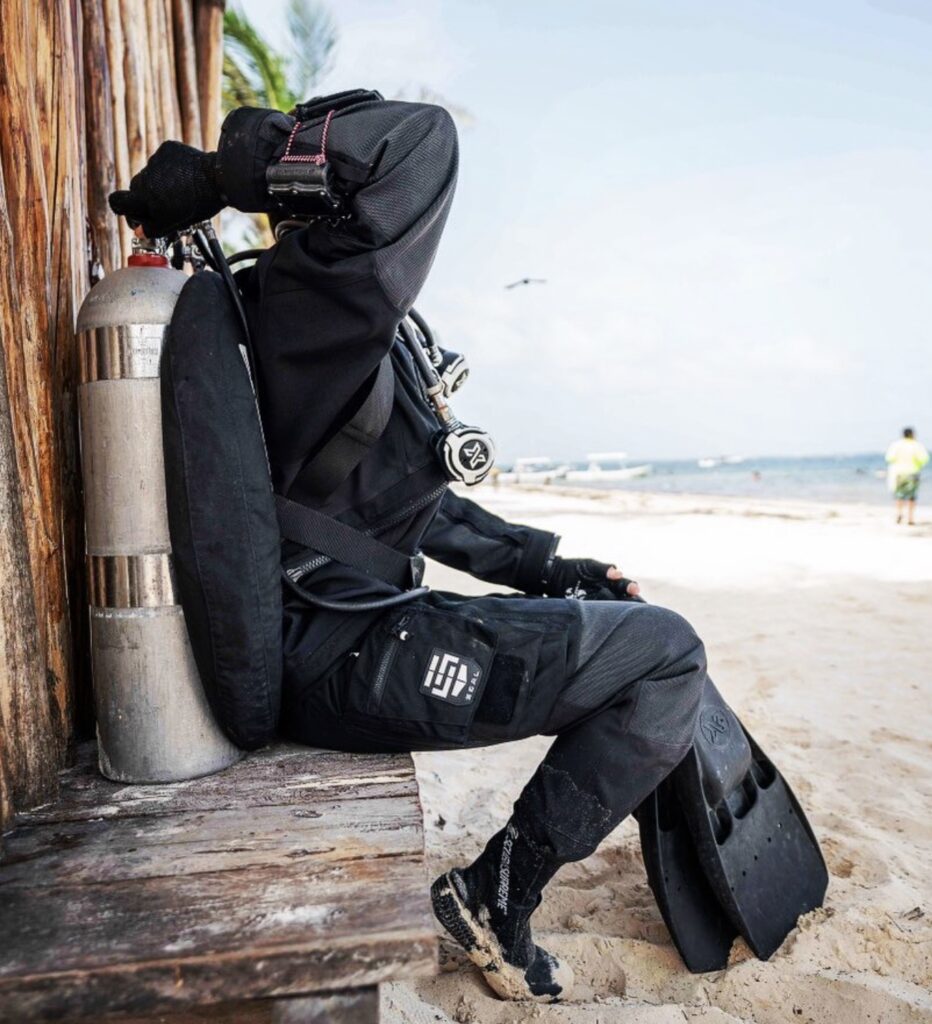
P-valves…
Pee valves have different flow rates, and some may be easier to pee through depending on the diameter of the hose and the orifices through which the liquid passes, including the quick connect. Unfortunately, this is something you can only find out by trying, so good luck with yours! What is really important for female divers is to have a balanced pee valve, since the She-P is glued to a part of our body where there is an air space, we need to be able to compensate the squeeze as depth increases.
The last of the options you will have to choose is the pee valve. I have had one in every one of my suits and pair it with the best invention of the century: the She-p. I refuse to use diapers because I consider them bad for the environment but I am also not a fan of the idea of peeing several times in a nappy.
I have experience with Halcyon, Apeks, and SiTech valves. They all do the job, as long as they are compensated.
Measurements!
In every step of the Seal Drysuits configurator, there is a detailed description of how the measurement should be taken and, most importantly, common mistakes to avoid when measuring are specified.
Some measurements should also be taken while wearing only underwear (or in my case, I did it with a base layer). This is indicated in each step, and a clear image is provided in case of doubt.
When you’re done, you will be asked to check that all measurements are correct. I recommend that you take note of the measurements on paper at the same time as you input them into the system so you can check that the final order has the exact same data.
The tentative price of the configuration is given to you along the process of creating your suit; depending on the options, the price is adjusted. A configuration code is also given to you, and you can save your configuration and come back later to modify it. Seal Drysuits are definitely on the high end as they are inspired in exploration and extreme types of diving.
If you finally accept the configuration, an email will be sent to you, and you’ll be able to print it and take it to a dealer to place the order. This allows you to make changes later. Note that the suit has a delivery time of 6 to 10 weeks.
My Review
Things I LOVE about Seal drysuits:
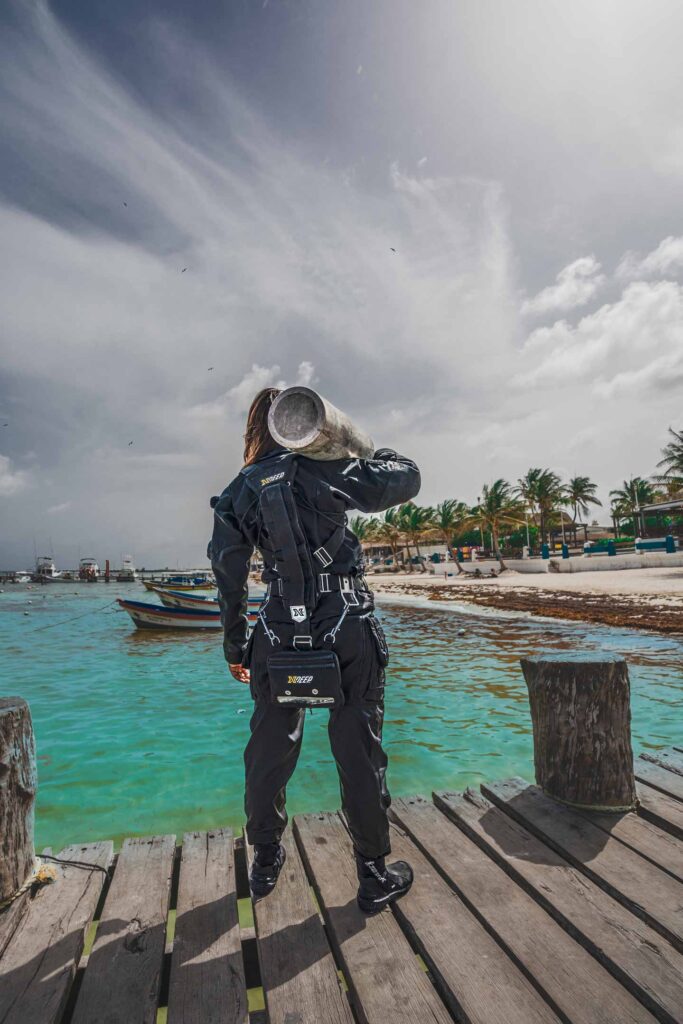
-It has a slim cut and looks pretty sleek. This may need to be considered when using cold-water undergarments. I personally ordered a cold-water suit that is 3 cm bigger than my usual suit to accommodate 400-weight undergarments. My warm-water suit works with those garments, but it is much more comfortable to have a little more room to move.
Photo: Alfred Minnaar
-The material is very resistant to abrasions and scratches; out of all my suits, the Seal is the one that has lasted the longest without repairs. My first Seal required its first repair after 1.5 years of use.
-The wet notes pocket. It’s a discreet slot behind the actual pocket that allows me to stick my wet notes in and take them out without having to open the pocket itself. I have also occasionally stored a low-profile spare mask in there.
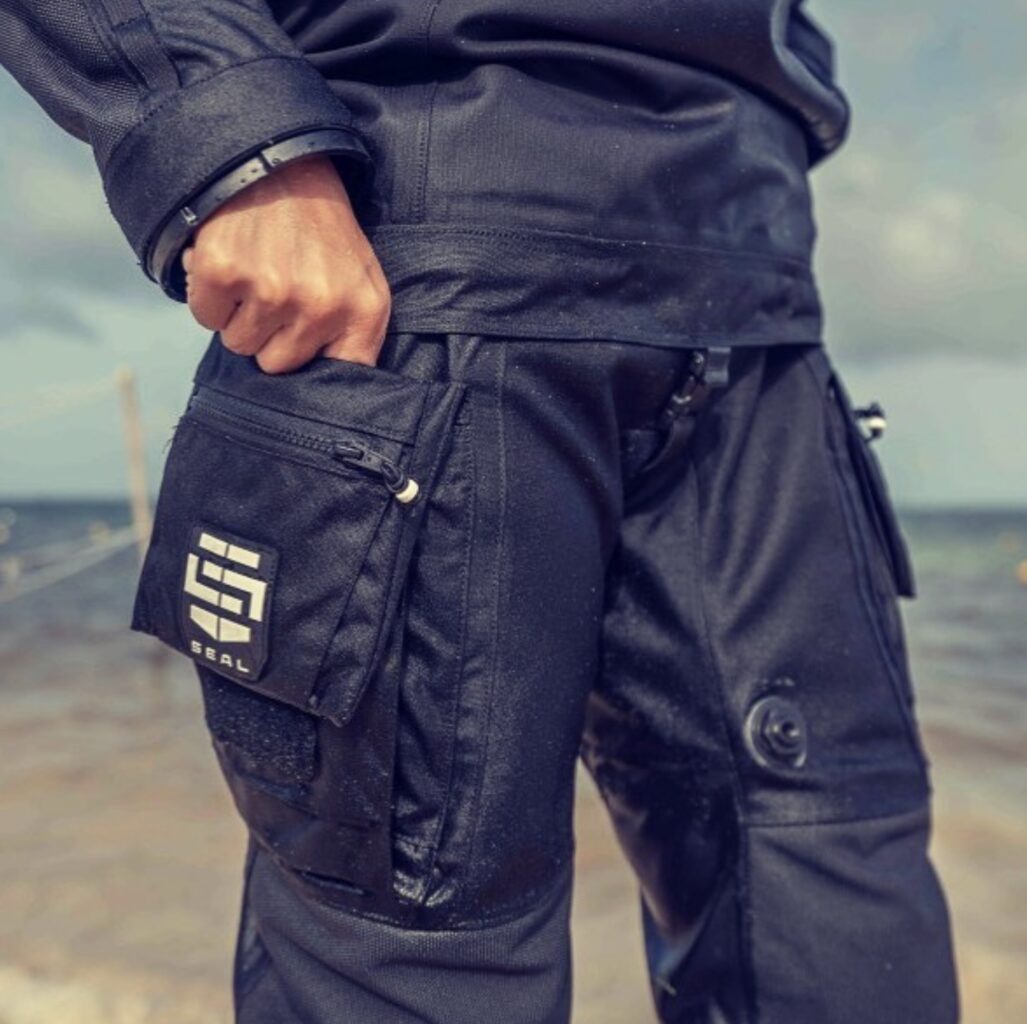
Photo: Alfred Minnaar
-It has an additional pocket on the sleeve. An extra compartment for a tool, or in my case, hairbands and zip ties.
-It has two velcro patches where you can add a badge (not included in the order).
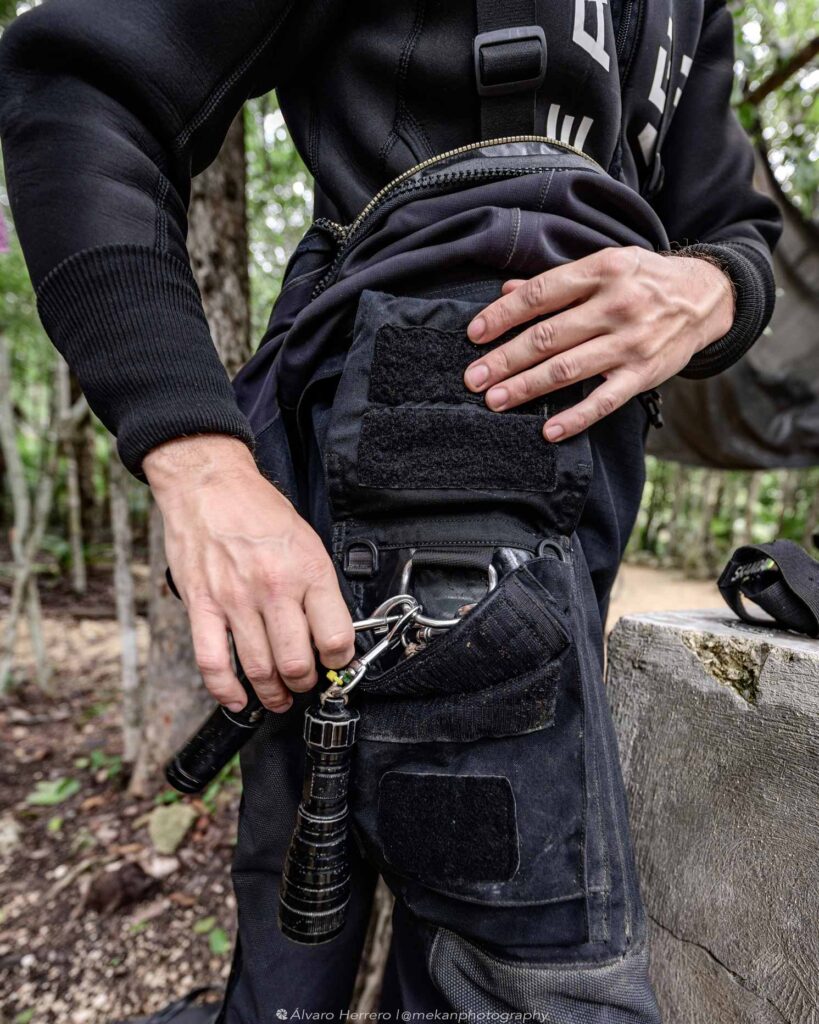
-The pockets have three D-rings for storage. One is a high-profile metal D-ring, and the other two are small plastic D-rings in the corners of the pocket. This allows for organizing the contents. This suit does not have the long bungee loops coming out of the pockets like other brands.
Photo: Mekan
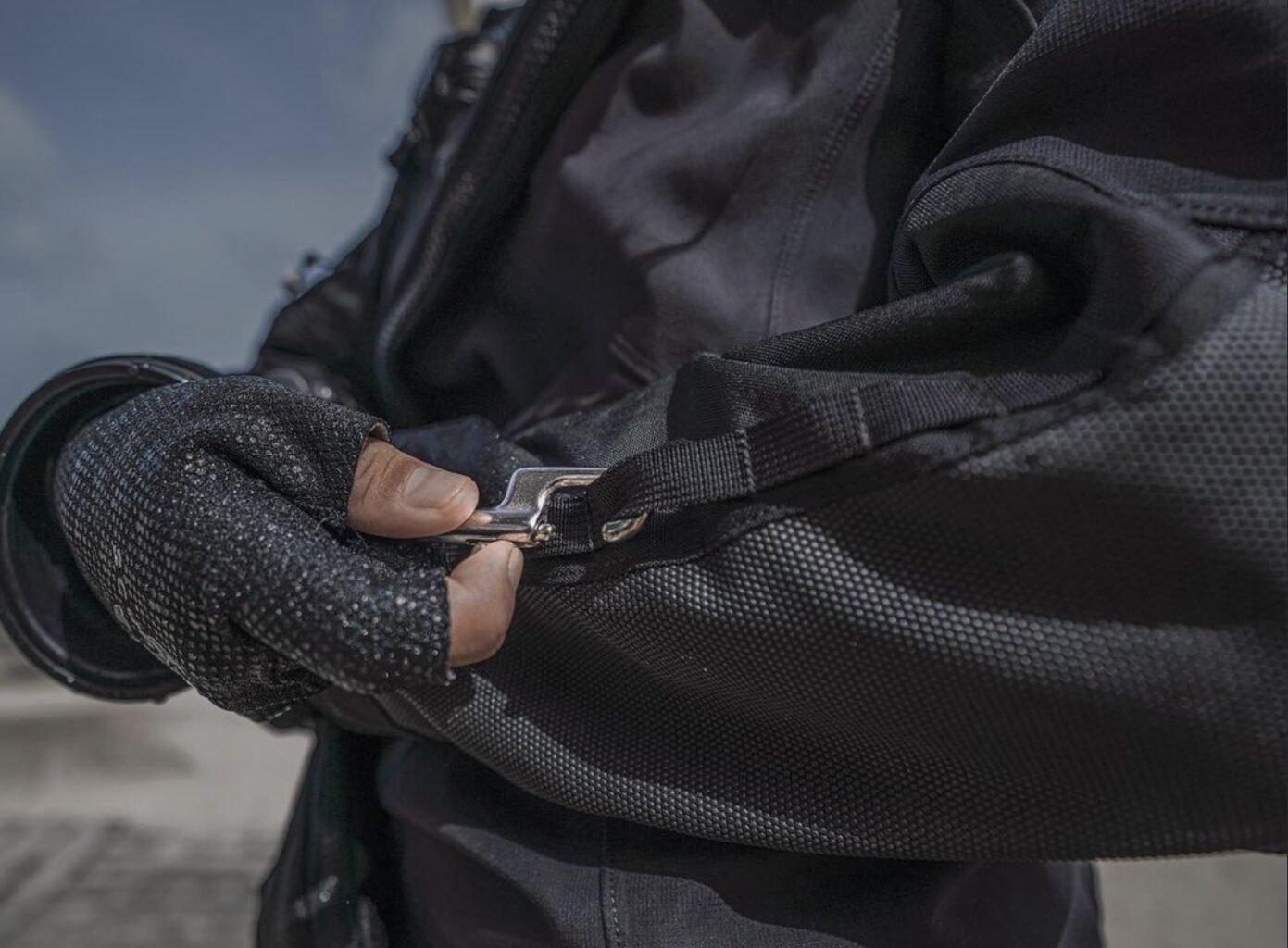
-It has thin webbing eyelets sewn along the arm length, which come in handy to temporarily clip boltsnaps, thread bungee (for the CCR computer cable), or even adjust the sleeve by gripping the webbing (this was useful with thick garments).
Photo: Alfred Minnaar
An honest review wouldn’t be complete without providing feedback on the things I do not prefer about the product, so…
Things I don’t love about Seal drysuits:
-The size of the pockets. While low-profile pockets are good for certain things, I have found myself without enough storage space while conducting science projects where I would have appreciated more pocket room. I have overcome this by using a pouch or bringing fewer accessories on a dive. This is not a reason why I would not order this suit, but if bigger pockets were an option, I would definitely go for it.
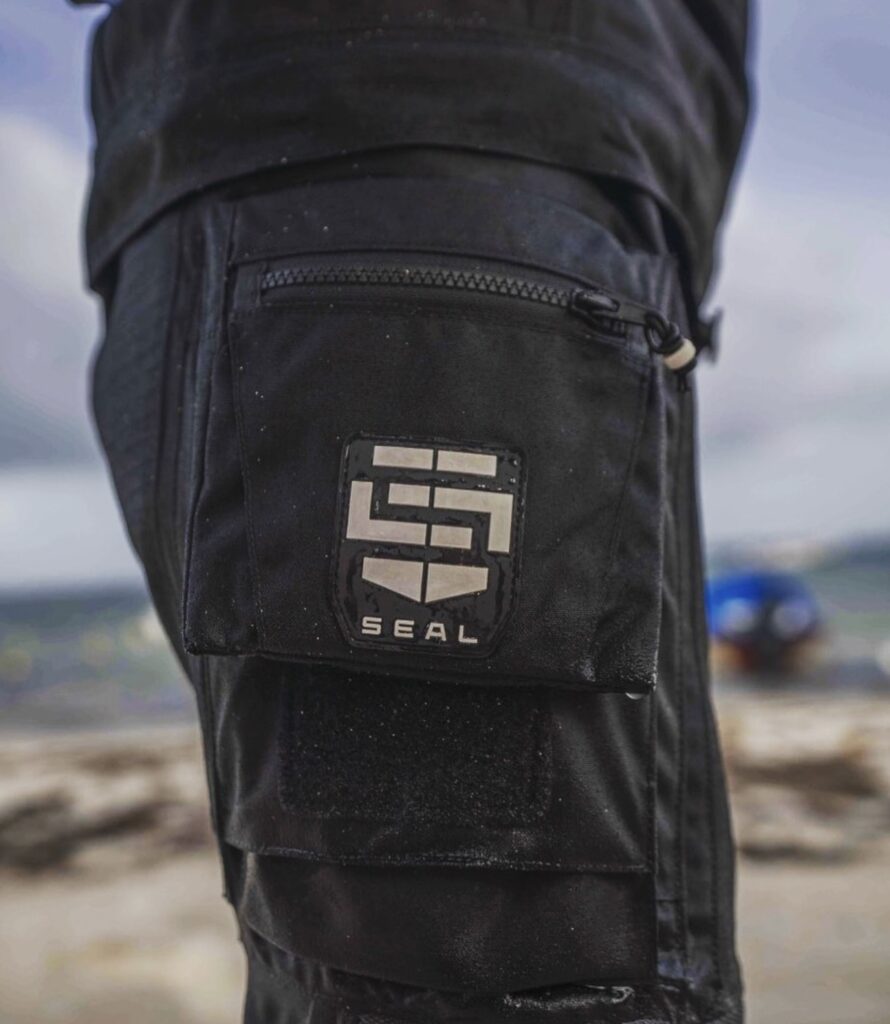
Photo: Alfred Minnaar
-A woman-specific cut. The cut of the Seal drysuit is comfortable for sure and covers most of my needs as a technical diver and cave instructor. Being a custom suit, it fits like a glove. However, having a woman-specific cut would make getting in and out of the suit slightly easier for me, as the opening of the suit corresponds to the measurement of the waist. For a curvy shape like mine, it can be trickier, as hips and thighs are usually thicker than the waist. I got around this by adding a few centimeters to the waist measurement to ensure getting in and out is easy.
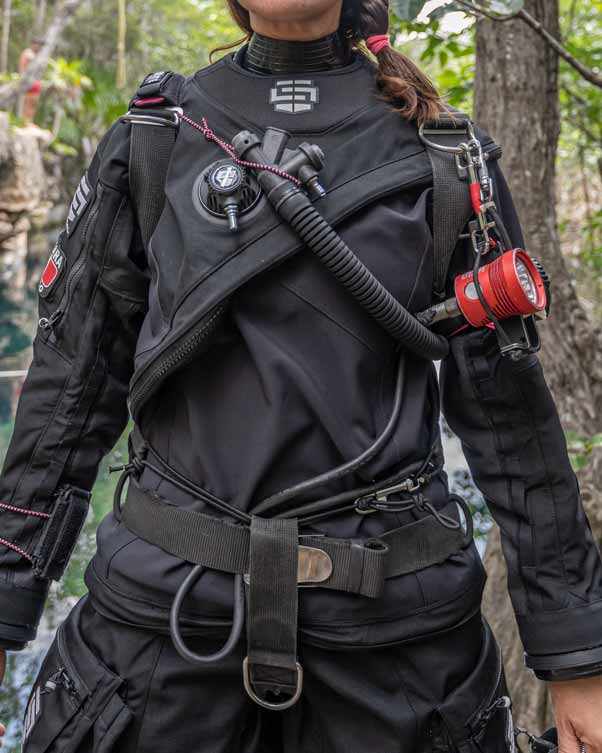
Photo: Mekan
-The placement of the pee valve is designed to connect with a condom catheter and not with a She-p. This placement favors the hose pointing up, which is the natural position that suits the male connection. For women, the hose should go up to curve and come straight down as the She-p tube points upwards. This makes it slightly awkward when the pee valve is placed toward the inner thigh (which is considered the classic placement). The Seal suit is not the only suit that comes with that pee valve placement; it is rather an industry standard. We may be able to change this in the long run by providing feedback to manufacturers so they can consider a female pee valve placement.
-The pee valve provided with the suit comes with a male connector for a condom catheter, even though they know my gender from the online configurator. it would be nice if Seal Drysuits could provide a connector for the She-p when a woman orders the suit.
All in all…
As the slogan goes: Forged in exploration. The Seal drysuit is a well thought piece of gear that is made to thrive in harsh conditions. I trust the product and have learned enough about it to be able to orient students and divers who wish to buy a suit, and I don’t only recommend it but since I wear it almost every day, I am able to show in person what the suit should look like in and out of the water. Diving dry can be an adventure, like every new technique it takes time, practice is key and sometimes we feel frustrated with the first results. But just how the Navy Seals say: slow is smooth, smooth is fast. And I like to add: fast is sexy! Especially if you’re in a high performing suit, comfortably hovering in a Mexican Cenote.
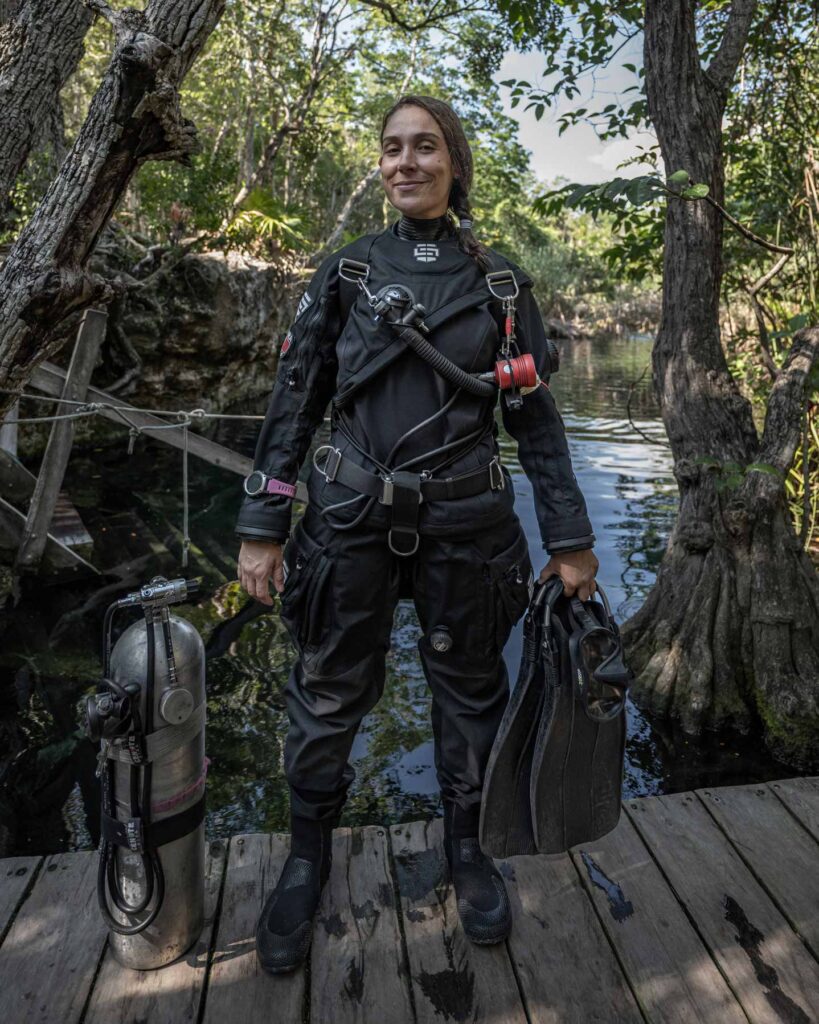
Photo: Mekan
If this is your first suit and you have questions about the options feel free to reach out to the ProTec team, most of us have worn a few Seal drysuits and we have also tested and contributed with feedback for the manufacturers to get first hand information about the performance of the suit.
If this is not your first suit but you need input about specific points not covered in this post, feel free to reach out too! With years of experience and troubleshooting with divers, we do have a mass of information accumulated about drysuit diving and other techniques. If you didn’t read our previous Review for the Seal drysuits by Skanda Coffield-Feith, check it out as well as other product reviews we have on the blog.
Last but not least, remember that drysuit diving is usually referred to as “the expensive way of diving wet”. There are many reasons why a suit may not be a fit or why you may be experiencing less than ideal conditions with your suit. If you are not having a great time and you’re struggling figuring out how to become comfortable in a drysuit, know there is a huge community out here willing to share knowledge and give pointers. User error is sometimes the cause of your suit’s failure and learning from other divers can help progress on this and any other type of diving. Ask the others about their failures and how they fixed them, and keep an open mind about drysuit diving for at least 50 dives before you decide it is not for you.
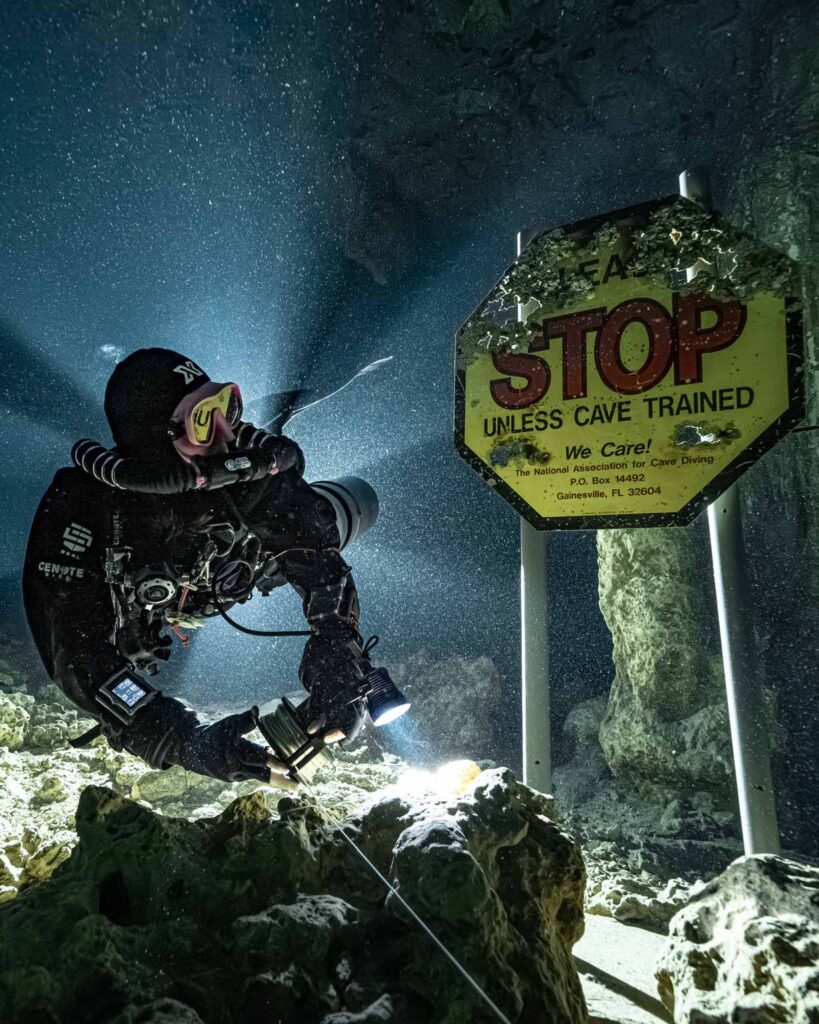
Last but not least, remember that drysuit diving is usually referred to as “the expensive way of diving wet”. There are many reasons why a suit may not be a fit or why you may be experiencing less than ideal conditions with your suit. If you are not having a great time and you’re struggling figuring out how to become comfortable in a drysuit, know there is a huge community out here willing to share knowledge and give pointers. User error is sometimes the cause of your suit’s failure and learning from other divers can help progress on this and any other type of diving. Ask the others about their failures and how they fixed them, and keep an open mind about drysuit diving for at least 50 dives before you decide it is not for you.
Photo: Mekan
